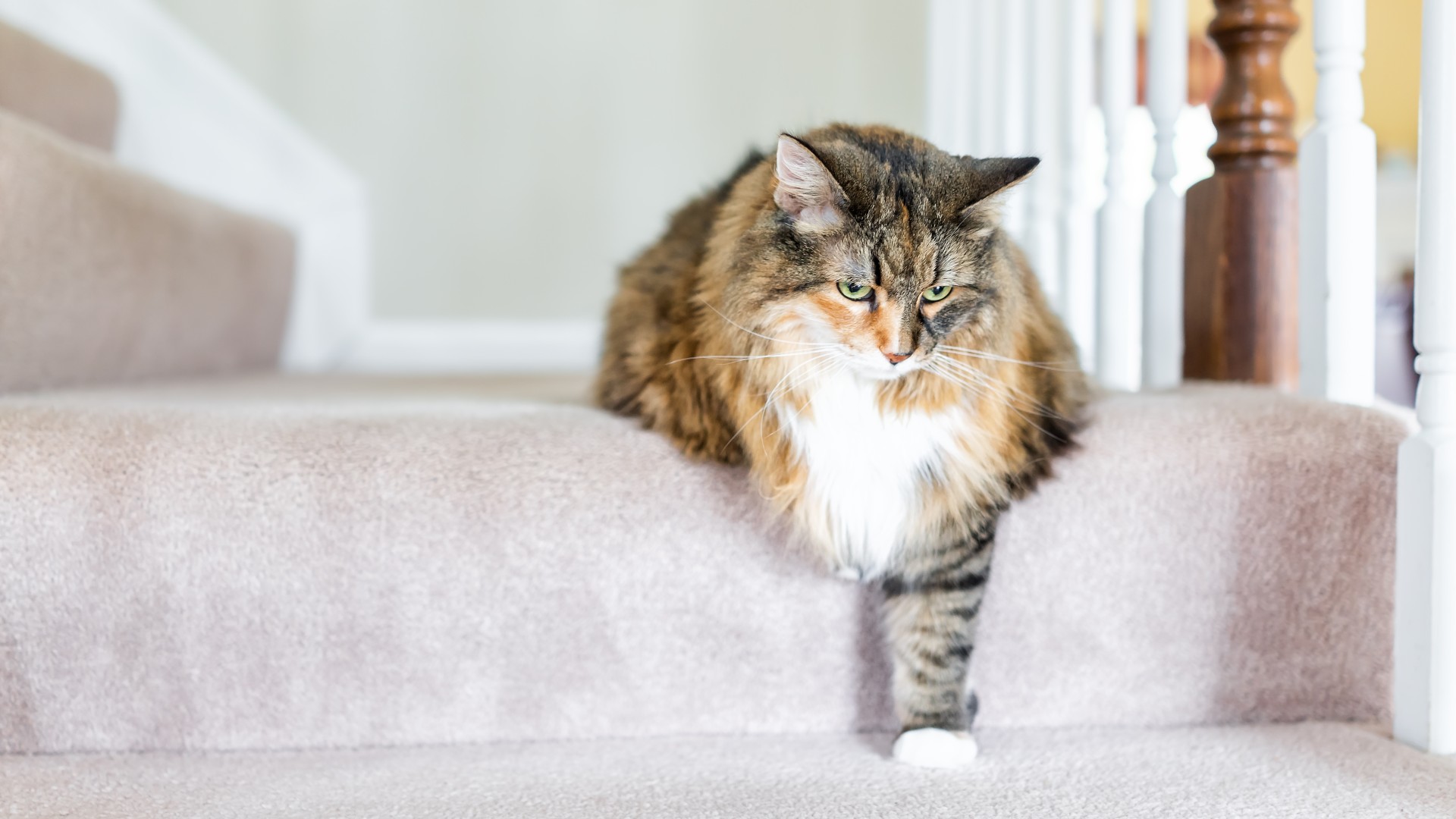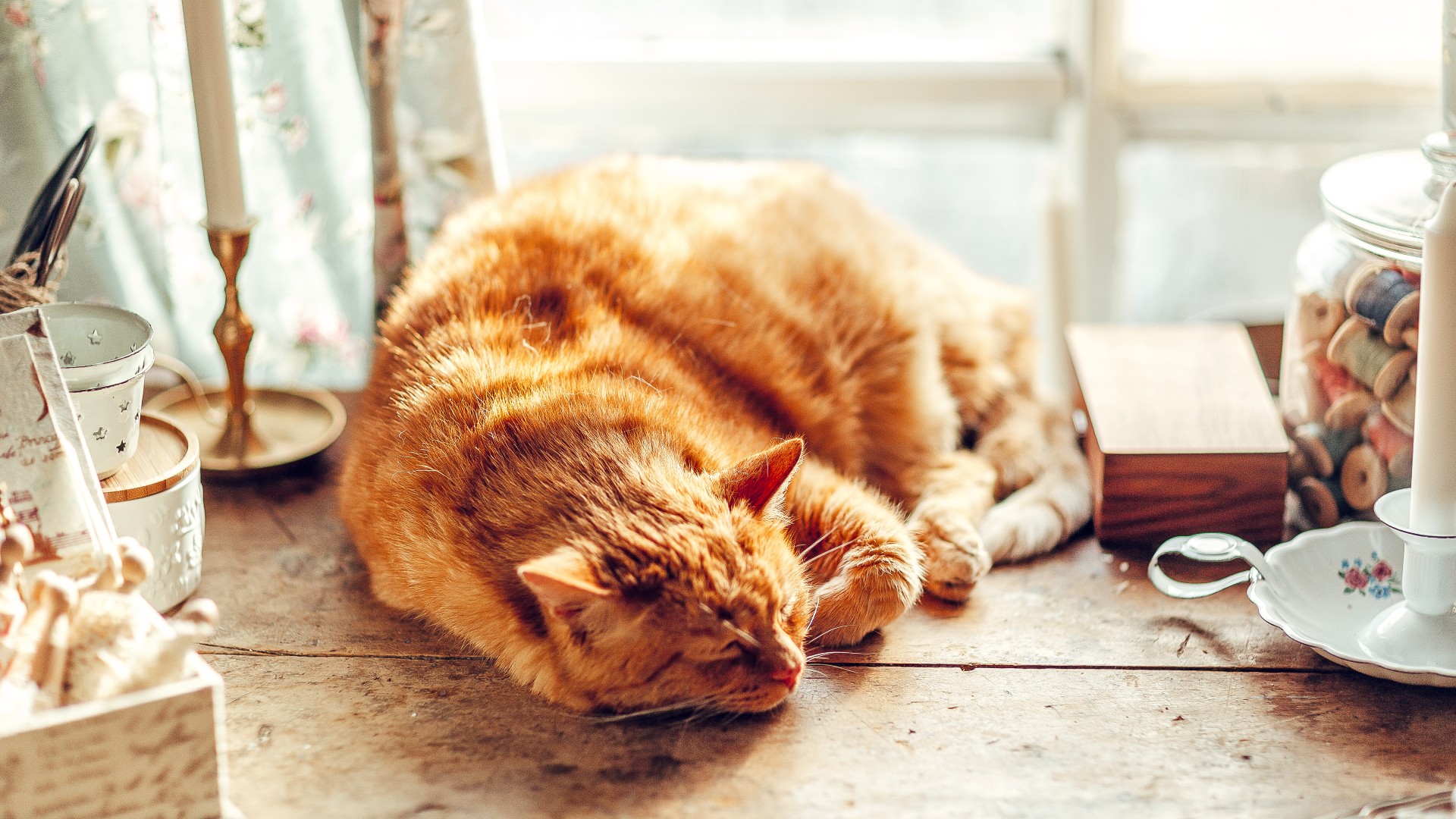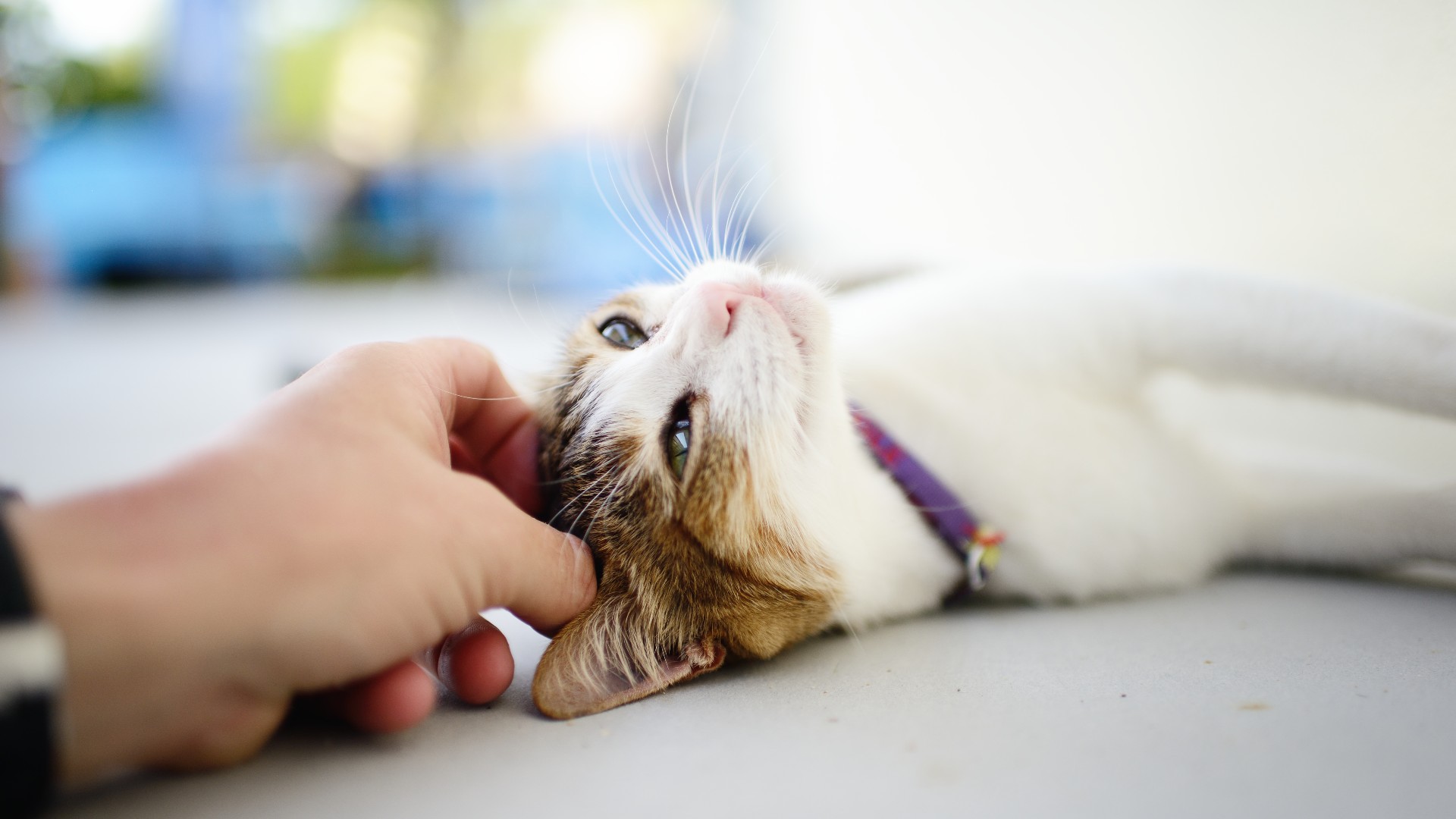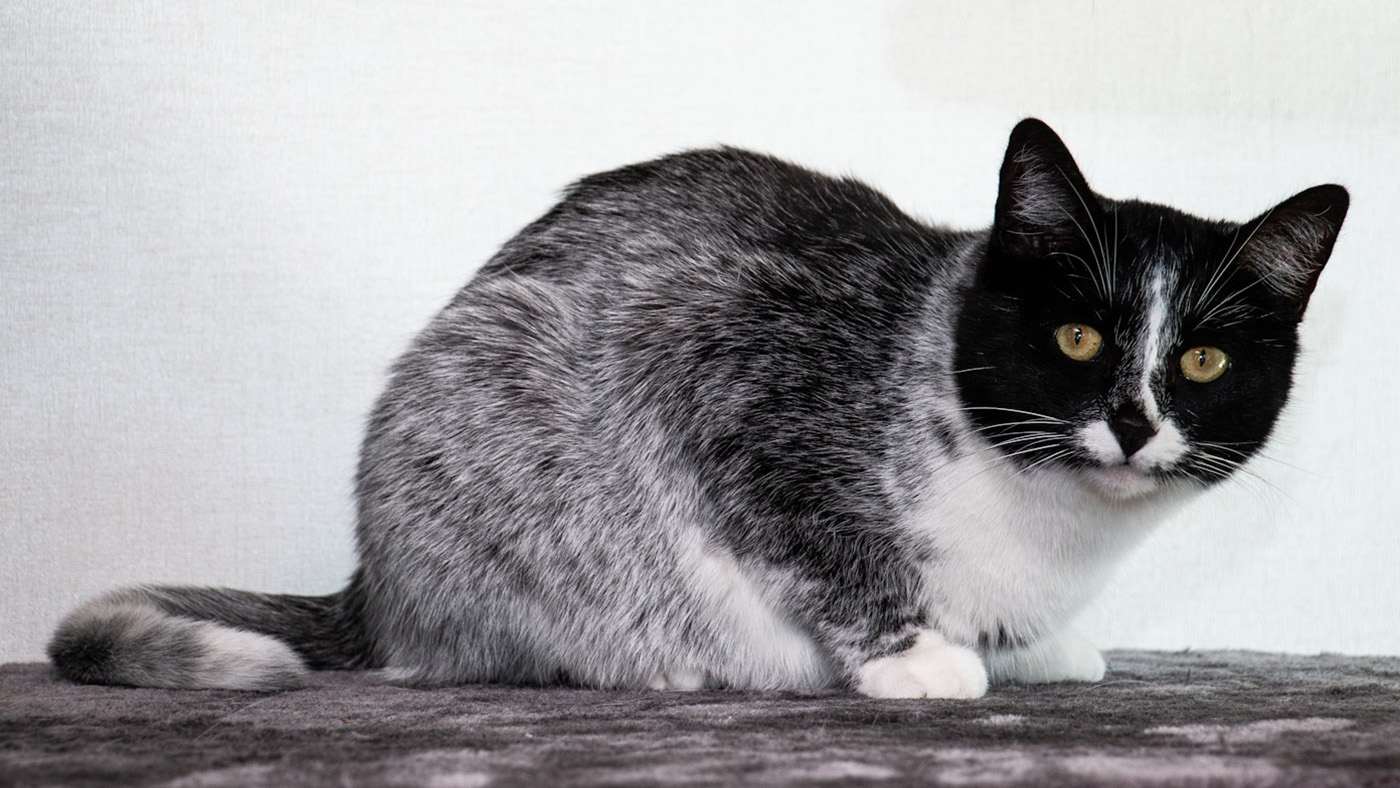Arthritis in cats: Vet's guide to causes and treatment
Our vet reveals everything you need to know about arthritis in cats, including how you can treat it at home

Arthritis in cats is a painful condition, which progresses over time. It’s alarmingly common, affecting around 90% of cats over the age of 12 years.
While it is more common in elderly cats, it can affect cats at any age. Sadly, arthritis cannot be cured. However, it can usually be successfully managed, so that cats can enjoy a good quality of life for many years.
In most cases, the earlier arthritis is detected, the better the outcome. This, coupled with the fact that cats hide signs of illness and pain extremely well, means it’s important for pet parents to be aware of the early signs of pain in cats to watch out for.
What is arthritis in cats?
Arthritis is a degenerative disease of the joints. It is also known as osteoarthritis, or degenerative joint disease (DJD). Arthritis in cats can affect one, or multiple, joints.
The bones in a healthy joint glide smoothly past each other. This is facilitated by a thin layer of smooth cartilage covering the bones, acting to cushion the joint, and lubricating joint fluid.
In arthritis, the cartilage is damaged, meaning its surface is no longer smooth. This creates friction when the bones move past each other, which causes inflammation and further damages the cartilage. Over time the joint becomes more and more painful and stiff, as new bone forms around the joint.
There are two types of arthritis in cats. Primary arthritis has no obvious cause and is thought to be due to wear and tear of the joint as the cat ages. Secondary arthritis happens as a result of an abnormality in the joint, such as hip dysplasia, or following an injury or trauma.
Causes of arthritis in cats
The exact cause of arthritis in cats is not yet known. However, there are some factors which increase the risk of arthritis developing.
For example, some breeds are at greater risk of abnormal joint development, meaning they are at greater risk of secondary arthritis. Maine Coons are a good example since they are prone to Hip Dysplasia. An injury to the joint, such as a fracture or dislocation, will make secondary arthritis much more likely.
Lastly, being obese puts extra pressure on the joints, which may predispose to arthritis by speeding wear and tear of the joint; and can certainly make existing arthritis worse.

Symptoms of arthritis in cats
The early symptoms of arthritis in cats can be very subtle and easy to miss. Remember, cats are a prey species as well as being predators, so their natural instinct is to hide signs of pain or illness.
The symptoms of arthritis in cats include:
- Over or under-grooming
- Matted fur
- Saliva staining around the joints
- Fur loss
- Sleeping more than usual
- Hiding
- Behavioral changes (shying away from touch, reluctance to play or unusual grumpiness)
- Inappropriate toileting outside of the litter box
- Stiffness, especially when rising from rest
- Muscle wastage
- Reluctance to jump or climb stairs
- Limping
- Swollen joints
It’s important that you book an appointment with your vet if you notice any of these symptoms in your cat.
Can arthritis in cats be treated?
Arthritis cannot be cured in cats, but it can be successfully managed with treatment. The goals of treatment are to slow the progression of the disease, to keep the cat mobile and to treat pain.
Veterinary treatment for arthritis can include:
- Pain relief medication - The most commonly used pain relief is non-steroidal anti-inflammatory drugs (NSAIDs). This is because they treat pain, while also reducing heat and swelling (inflammation) in the joint. Other drugs which may be used alongside, or instead of, NSAIDs include buprenorphine, gabapentin, tramadol and amantadine. These medications are all given by mouth. There is also a monthly injection which has recently become available, of monoclonal antibody therapy. This works in a different way from NSAIDs; working like your cat's naturally made antibodies to reduce pain signals.
- Surgery - Surgery may be appropriate in some cases, such as in cats with underlying hip or elbow dysplasia.
- Alternative therapies - Your vet may recommend ‘alternative therapies’, to be used alongside medical treatment. For example, physiotherapy may help to maintain or improve your cat’s range of motion, while acupuncture (by a vet) is sometimes used for additional pain relief. Some vet practices can also offer laser therapy.
Each of these treatments has its own pros and cons, and there is no ‘one size fits all’ approach. Every cat is unique, with unique needs. Your vet will tailor a treatment plan to suit your cat’s age, underlying medical conditions and type of arthritis.
Can catnip or CBD oil help cats with arthritis?
There is no evidence that catnip can help with arthritis. In the UK, you cannot give CBD oil to your cat without a veterinary prescription, and at present, there is not enough evidence to support its use in arthritis.

Sarah-Jane Molier graduated in 2009 and has been enjoying life as a vet ever since. She currently works as Head Veterinarian in a small animal practice. Sarah-Jane particular enjoys internal medicine, alongside her managerial role.
Should you euthanize a cat with arthritis?
Arthritis can often be successfully managed, so a diagnosis of arthritis shouldn’t automatically be a cause to consider euthanasia. However, arthritis will inevitably progress and at some point, the pain may well become bad enough that euthanasia is the kindest option.
How long can a cat live with arthritis?
This will depend on the cat's age and overall health, for example, if they have other underlying medical conditions. Arthritis can often be successfully managed for several years.
How to help a cat with arthritis at home

You’ll be pleased to hear there are plenty of things you can do to help your arthritic cat at home too:
Weight control
Keeping your cat at a healthy weight will alleviate the pressure on their joints. Your vet or vet nurse will be able to help you with a weight management plan if you’re struggling.
Diet
The best food for cats with arthritis will depend on their age, overall health and if they have any other medical conditions. You can purchase diets tailored for arthritis, which have added nutrients to benefit the joint. Have a chat with your vet or vet nurse about the best diet for your cat.
Dietary supplements
Joint supplements aim to increase your cat’s intake of the nutrients that are important for joint health. Glucosamine, chondroitin and omega-3 are the most common ingredients.
These products are currently unregulated, meaning they vary greatly in quality, composition and palatability. Your vet will be able to advise you on suitable options for your cat.
Home modifications
Simple changes, such as non-slip mats on hard floors and using ramps, can make a big difference. Offer plenty of warm, comfy beds and a low-sided, easy-access litter tray.
Remember, none of these home measures will be enough to treat arthritis on their own and they must be used alongside veterinary treatment.
While arthritis in cats cannot be cured and will inevitably progress, it can usually be successfully managed, giving your cat a good quality of life for many years.
Remember, the sooner treatment is started the better, so be sure to book an appointment with your vet if you have any concerns about your cat.
For other ways to help a cat with arthritis, you might also want to consider the question, ‘Should I elevate my cat’s food bowl?’
PetsRadar Newsletter
Get the best advice, tips and top tech for your beloved Pets
Sarah-Jane Molier graduated in 2009 and has been enjoying life as a vet ever since. She currently works as Head Veterinarian in a small animal practice. Sarah-Jane particular enjoys internal medicine, alongside her managerial role. When not working in practice Sarah-Jane enjoys sharing her knowledge and helping pet parents by writing on a wide variety of animal health and medicine topics. In her spare time Sarah-Jane loves walking Nero (her rescue dog), gardening with her two young children and reading.
